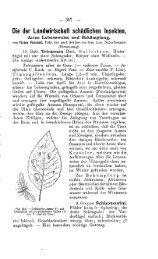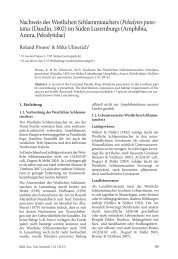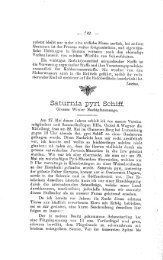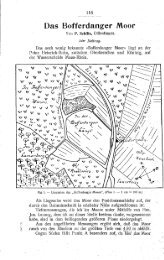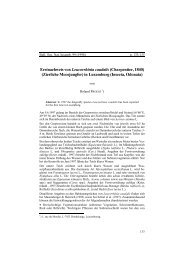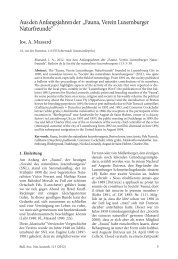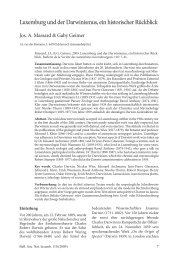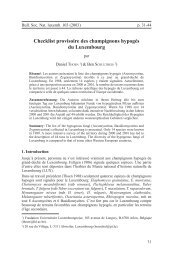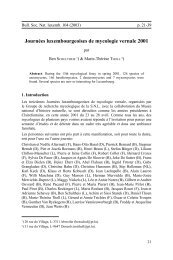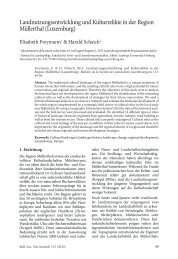Four new lichen-associated Trimmatostromaspecies ... - SNL
Four new lichen-associated Trimmatostromaspecies ... - SNL
Four new lichen-associated Trimmatostromaspecies ... - SNL
You also want an ePaper? Increase the reach of your titles
YUMPU automatically turns print PDFs into web optimized ePapers that Google loves.
thallus. Microscopically, it is distinguished<br />
by conidia frequently with a dark and thick<br />
outer wall limited to one side of the conidium<br />
(resembling conidia of Milospium<br />
graphideorum). Furthermore, conidia are<br />
usually smoother than in T. dendrographae,<br />
best seen in KOH. Because of the unevenly<br />
pigmented conidial wall, T. hierrense might<br />
be mistaken for a species of Milospium.<br />
However, conidia of the type species, M.<br />
graphideorum (Nyl.) D. Hawksw., have a<br />
very different shape, being irregularly lobed<br />
and aseptate, and they are never catenate.<br />
Conidia of M. deslooveri Diederich & Sérus.<br />
(Sérusiaux et al. 1999) and M. planorbis<br />
(Aptroot & Sipman 2001; holotype from<br />
B examined) are strongly curved, multicellular,<br />
often with incomplete septa, and<br />
never catenate; furthermore, both species<br />
are <strong>lichen</strong>ized, not <strong>lichen</strong>icolous. The <strong>new</strong><br />
species could also be confused with Trimmatostroma<br />
scutellare (Berk. & Broome) M.<br />
B. Ellis, another species with an unevenly<br />
thickened and pigmented conidial wall,<br />
but in that species conidia are multicellular<br />
with transverse and longitudinal septa (Ellis<br />
1976).<br />
Ecology, hosts and distribution: The <strong>new</strong><br />
species covers large parts of the thallus of<br />
a white crustose <strong>lichen</strong> with Trentepohlia<br />
reacting C+ red, that probably belongs to<br />
Arthonia endlicheri, growing on the root of<br />
a tree along a trail. Infected thalli become<br />
entirely dark greyish black. This species is<br />
known only from the type locality on the isle<br />
of El Hierro (Spain, Canary Islands).<br />
Trimmatostroma lecanoricola Diederich,<br />
Etayo, U. Braun & Heuchert sp. nov. Fig. 3<br />
MycoBank 518959.<br />
Trimmatostromatis dendrographae et T. quercicolae<br />
simile, sed catenis conidiorum disarticulantium<br />
aurantiaco-brunneis in KOH, nec umquam<br />
Fig. 3. Trimmatostroma lecanoricola (holotype). A, Thallus of saxicolous Lecanora with young infection. B, Thallus<br />
with older infection. C, Chains of conidia, in water. D, Same, in KOH. E, Disarticulating chain of conidia, in water.<br />
F, Conidium in surface view, showing verrucose, mosaic-like outer layer of conidial wall, in water. Scale bars: A–B<br />
= 0.5 mm, C–F = 10 μm.<br />
Bull. Soc. Nat. luxemb. 111 (2010) 51



